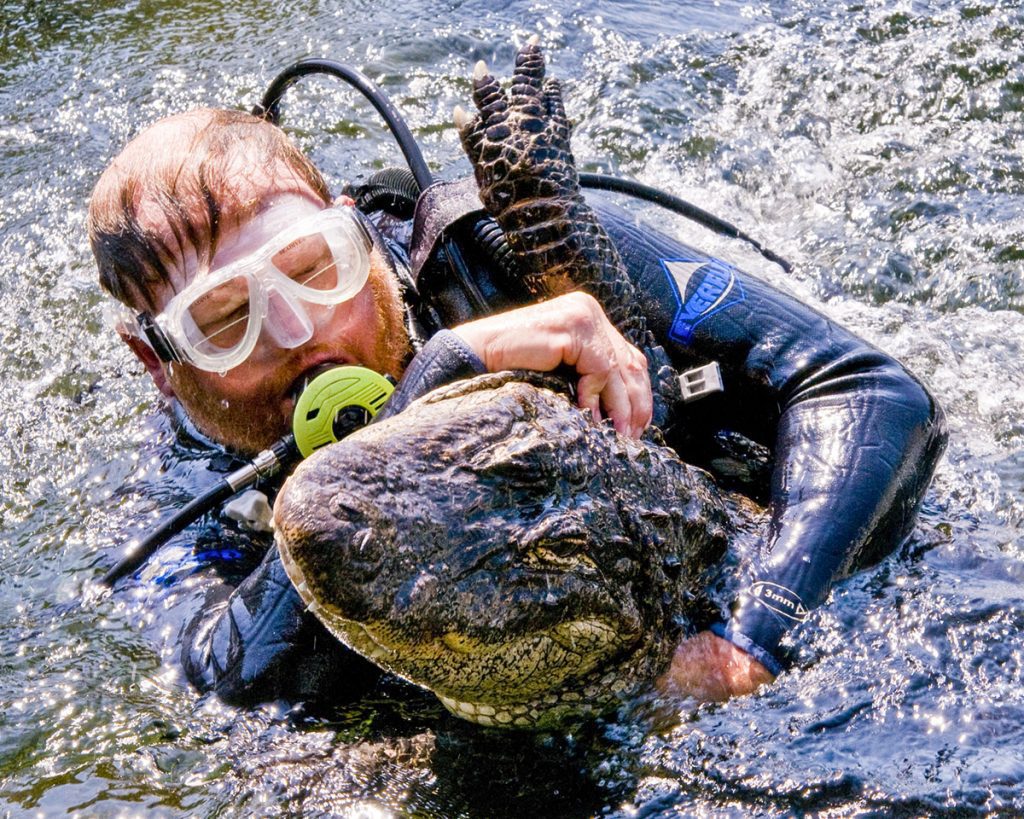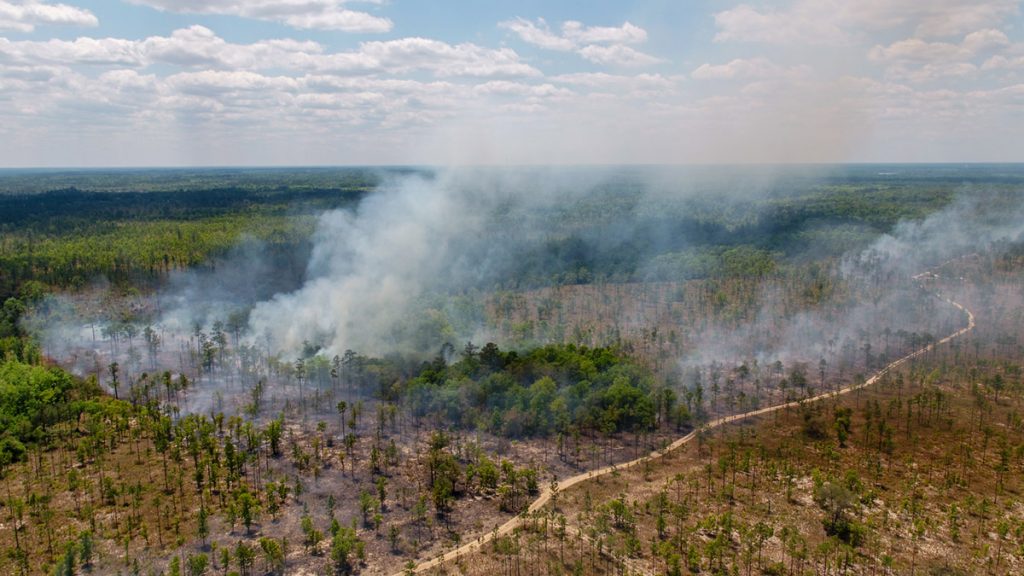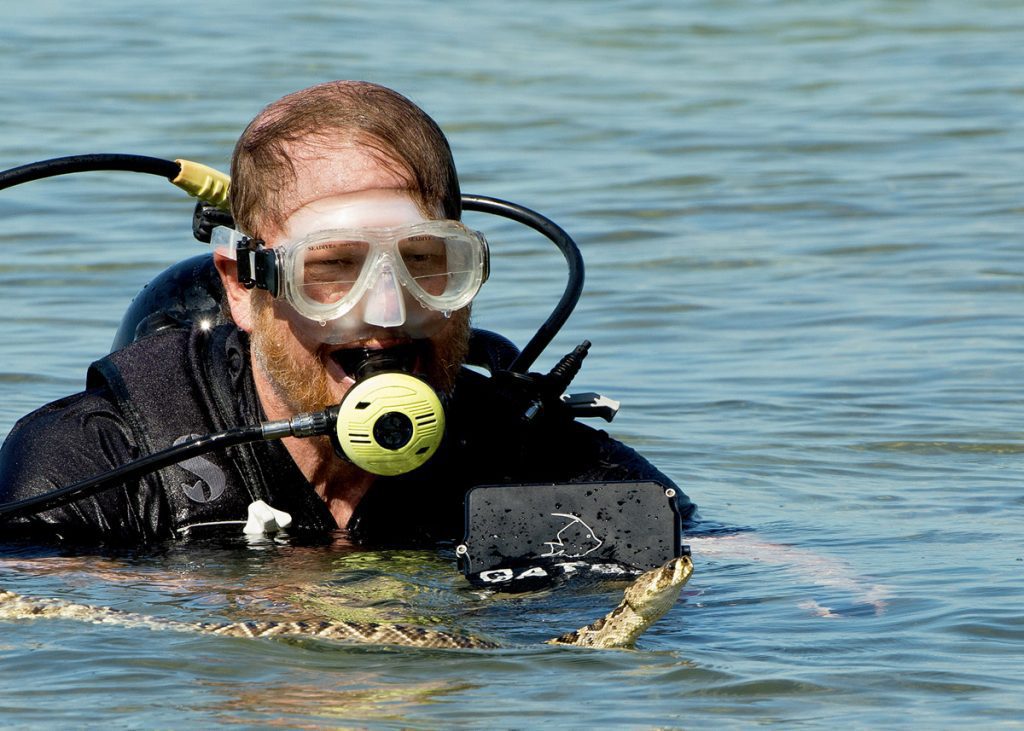Nature: Wild Florida airs on WFSU-TV on Wednesday, February 12 at 8 pm, 7 central.
I call Mark Emery to start our interview, and it takes me a second to get the phone recording equipment working. “I’m sitting here looking at two manatees,” he says, “and have this beautiful scene right in front of me. So it’s all good.”
Mark Emery is a filmmaker whose work has taken him from Botswana to Alaska. His latest project, however, had him working closer to home. Emery narrated the latest episode of PBS Nature, Wild Florida, which covers the diverse ecosystems of the Sunshine state. He also served as one of the documentary’s photographers, filming alligators in the very river along which he grew up.
Many Floridians will recognize their nearby wild places in this documentary. It’s got a little bit of everything, from key deer in the south up to longleaf forests by the Apalachicola River. No nature film about Florida would be complete without some time spent in the Everglades, and Wild Florida follows both native alligators and the exotic invasive species that have been decimating wildlife there. If, like me, you’re fascinated by swallow tailed kites, there’s a scene you’ll love.
And then there’s the Silver River, right in Emery’s own backyard. Here, Mark Emery received a one of a kind start to a career in nature photography.

Starting Out at Silver Springs
“Where I worked, it was at Silver Springs,” says Emery. “And back then, Ross Allen was the hero then. He was on Johnny Carson and Jack Parr, and he just got all of us interested in wildlife.” Ross Allen was a famed herpetologist. He founded the Reptile Institute, which he ran at Silver Springs for forty-six years.
“I ended up working there, milking snakes and wrestling alligators five times a day. And two or three of the other people working there were good still photographers, and published and all that. Learning techniques from them and watching them.”

One of his mentors at Silver Springs was Jordan Klein, a pioneer in underwater photography. Klein invented some of the first underwater camera housings, and worked for decades on high profile movies and television shows. In 1968, he won an Oscar for his work on the James Bond film, Thunderball.
Emery himself went on to a career as a cinematographer, working with National Geographic, Discovery, and Nature. With Wild Florida, he has a rare opportunity to showcase his home state to a national audience- the whole state, with its many diverse ecosystems.
“it’s a national treasure just as great as any of the large parks out west. You have a tremendous diversity here that, I can’t think of another place in the country that has it. You’re tropical and subtropical. So you have place that have animals that you just don’t live anywhere else in the world. And trees that don’t live anywhere else in the world, like Torreya State Park has the Torreya tree.”
Silver Springs is outside of the WFSU viewing area, but we did cover underwater archeology there in 2017.
Filming Fire Ecology in North Florida
One section of Wild Florida takes place not far from Torreya State Park, in The Nature Conservancy’s Apalachicola Bluffs and Ravines Preserve. Here, they tracked gopher tortoises and indigo snakes in longleaf habitat, and discussed fire ecology with The Nature Conservancy’s David Printiss.
“All of the inhabitants of the longleaf pine forest – every plant and animal – are not only adapted to frequent fire, they depend on it.” Says Printiss, Conservation Manager for The Natue Conservancy in North Florida. “The entire ecosystem is most productive – more tortoises, quail and deer – when the woods burn every 2-3 years.”

“And the folks in your area are as advanced on it as anyone in the country,” Emery says of our area’s practitioners of prescribed fire.
“Prescribed fire practitioners use many tools to get the job done.” says Printiss. “The choice of how to light the fire – drip torch, helicopter, drone – depends on numerous factors including weather, burn objectives and safety.”
Emery was impressed with the methods he witnessed during filming. “These guys were, as you’ll find out in the film, were ejecting little pellets out and going around to areas that had the trees that might have certain woodpeckers nesting in those trees.”
He’s referring to red cockaded woodpeckers, which nest in longleaf pine of at least 90 years of age.
“They were literally able to, from a helicopter, place the fire where they wanted it. And did a superb job of it. So it was really one of the more interesting ways I’ve seen it done. I don’t think I’ve ever seen anybody do it that precisely before.”

Up next for Mark Emery
In addition to Wild Florida, Emery has recently completed a passion project focused entirely on his beloved Silver Springs. Specifically, he’s telling the story of the springs through the glass bottom boat drivers at Silver Springs State Park. “The four that we picked out had collectively 200 years of experience on the river… they’ve spoken to over twelve million people in the last 56 years. Some of them have been here 63, 64 years.”
The film is called the Silver River Story. Right now, Emery is showing it at screenings, but he is working on getting it on television as well.

